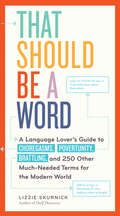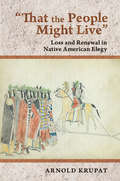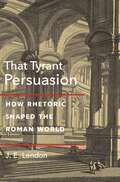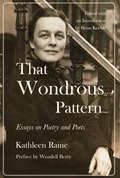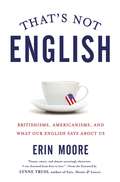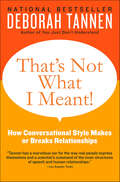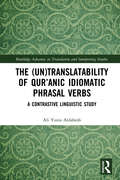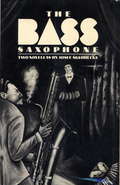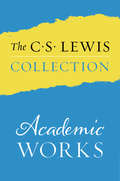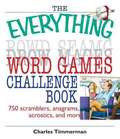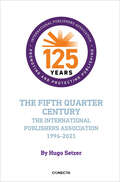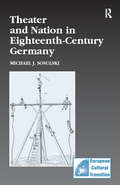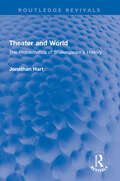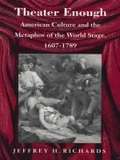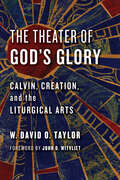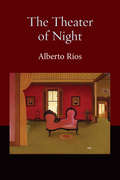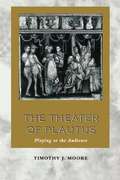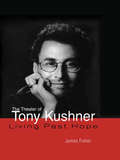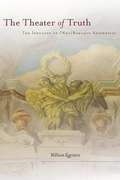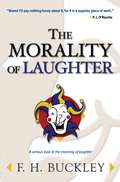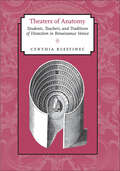- Table View
- List View
That Should Be a Word: A Language Lover's Guide to Choregasms, Povertunity, Brattling, and 250 Other Much-Needed Terms for the Modern World
by Lizzie SkurnickFinally there’s a word for it: Fidgital—excessively checking one’s devices. Martyrmony—staying married out of duty. Author of the highly popular “That Should Be a Word” feature in the New York Times Magazine, Lizzie Skurnick delights word lovers with razor-sharp social commentary delivered via clever neologisms. That Should Be a Word is a compendium of 244 of Skurnick’s wittiest wordplays—more than half of them new—arranged in ingenious diagrams detailing their interrelationships. Complete with definitions, pronunciations, usage examples, and illustrations, That Should Be a Word features words on our obsession with food: carbiter—one who asserts that someone else cannot be hungry. On social media, like twiticule—to mock someone in 140 characters. On the modern family, like brattle—to discuss one’s children at great length, which leads to words like spamily—Facebook or Twitter updates about kids—and spawntourage—a group of approaching strollers. From highlighting the profound financial anxiety of a post-recession society (bangst) to mocking the hyper-vain celebrity circle that abstains from anything of import (celebracy), That Should Be a Word delves deep into all the most humorous, and maddening, aspects of life in the 21st century.
That Summer in Paris: Memories of Tangled Friendships with Hemingway, Fitzgerald, and Some Others
by Morley Callaghan"That Summer In Paris" brings to the fore the fabulous summer of 1929 when the literary capital of North America moved to La Rive Gauche--the Left Bank of the Seine River--in Paris. Ernest Hemingway was reading proofs of "A Farewell to Arms", and a few blocks away F. Scott Fitzgerald was struggling with "Tender Is the Night". As his first published book rose to fame in New York, Morley Callaghan arrived in Paris to share the felicities of literary life, not just with his two friends, Hemingway and Fitzgerald, but also with fellow writers James Joyce, Ford Madox Ford, and Robert McAlmon. Amidst these tangled relations, some friendships flourished while others failed.
"That the People Might Live": Loss and Renewal in Native American Elegy
by Arnold KrupatThe word "elegy" comes from the Ancient Greek elogos, meaning a mournful poem or song, in particular, a song of grief in response to loss. Because mourning and memorialization are so deeply embedded in the human condition, all human societies have developed means for lamenting the dead, and, in "That the People Might Live" Arnold Krupat surveys the traditions of Native American elegiac expression over several centuries.Krupat covers a variety of oral performances of loss and renewal, including the Condolence Rites of the Iroquois and the memorial ceremony of the Tlingit people known as koo'eex, examining as well a number of Ghost Dance songs, which have been reinterpreted in culturally specific ways by many different tribal nations. Krupat treats elegiac "farewell" speeches of the eighteenth and nineteenth centuries in considerable detail, and comments on retrospective autobiographies by Black Hawk and Black Elk.Among contemporary Native writers, he looks at elegiac work by Linda Hogan, N. Scott Momaday, Gerald Vizenor, Sherman Alexie, Maurice Kenny, and Ralph Salisbury, among others. Despite differences of language and culture, he finds that death and loss are consistently felt by Native peoples both personally and socially: someone who had contributed to the People's well-being was now gone. Native American elegiac expression offered mourners consolation so that they might overcome their grief and renew their will to sustain communal life.
That Tyrant, Persuasion: How Rhetoric Shaped the Roman World
by J. E. LendonHow rhetorical training influenced deeds as well as words in the Roman EmpireThe assassins of Julius Caesar cried out that they had killed a tyrant, and days later their colleagues in the Senate proposed rewards for this act of tyrannicide. The killers and their supporters spoke as if they were following a well-known script. They were. Their education was chiefly in rhetoric and as boys they would all have heard and given speeches on a ubiquitous set of themes—including one asserting that &“he who kills a tyrant shall receive a reward from the city.&” In That Tyrant, Persuasion, J. E. Lendon explores how rhetorical education in the Roman world influenced not only the words of literature but also momentous deeds: the killing of Julius Caesar, what civic buildings and monuments were built, what laws were made, and, ultimately, how the empire itself should be run.Presenting a new account of Roman rhetorical education and its surprising practical consequences, That Tyrant, Persuasion shows how rhetoric created a grandiose imaginary world for the Roman ruling elite—and how they struggled to force the real world to conform to it. Without rhetorical education, the Roman world would have been unimaginably different.
That Wondrous Pattern: Essays on Poetry and Poets
by Kathleen Raine“There is no exaggeration in pointing out that these essays are addressed to the soul of the reader. They are not academic exercises in erudition as a contribution to ‘Eng. Lit.’” —from the introduction by Brian Keeble Kathleen Raine was one of the greatest British poets of the last century. Born to a deeply literary and spiritual household, she went on to study at Cambridge, where she met Jacob Bronowski, William Empson, and Malcolm Lowry. A dedicated neoPlatonist, she studied and presented the works of Thomas Taylor and wrote seminal books on William Blake. With Keith Critchlow, Brian Keeble, and Philip Sherrard, she founded, in 1981, the Temenos Academy of Integral Studies, its journal Temenos, and, later, the Temenos Academy Review. HRH The Prince of Wales became the patron of the academy in 1997.For our new selection, That Wondrous Pattern, Raine offers sixteen essays that range from “The Inner Journey of the Poet” and “What Is Man?” to essays on Blake, Wordsworth, Hopkins, Yeats, Eliot, and several others. The centerpiece, “What Is the Use of Poetry?”, is a rigorous defense of the great art. Editor Brian Keeble himself contributes a fascinating introduction to Raine’s work, and Wendell Berry, a colleague and friend of hers, offers a preface.All who spend time in the presence of this wonderful writer will leave newly entranced with the art and use of the beautiful, convinced that “it is only in moments when we transcend ourselves that we can know anything of value.
That's Not English
by Erin Moore Lynne TrussAn expat's witty and insightful exploration of English and American cultural differences through the lens of language that will leave readers gobsmackedIn That's Not English, the seemingly superficial differences between British and American English open the door to a deeper exploration of a historic and fascinating cultural divide. In each of the thirty chapters, Erin Moore explains a different word we use that says more about us than we think. For example, "Quite" exposes the tension between English reserve and American enthusiasm; in "Moreish," she addresses our snacking habits. In "Partner," she examines marriage equality; in "Pull," the theme is dating and sex; "Cheers" is about drinking; and "Knackered" covers how we raise our kids. The result is a cultural history in miniature and an expatriate's survival guide. American by birth, Moore is a former book editor who specialized in spotting British books--including Eats, Shoots & Leaves--for the US market. She's spent the last seven years living in England with her Anglo American husband and a small daughter with an English accent. That's Not English is the perfect companion for modern Anglophiles and the ten million British and American travelers who visit one another's countries each year.
That's Not English: Britishisms, Americanisms, and What Our English Says About Us
by Lynne Truss Erin MooreAn expat's witty and insightful exploration of English and American cultural differences through the lens of language that will leave readers gobsmackedIn That's Not English, the seemingly superficial differences between British and American English open the door to a deeper exploration of a historic and fascinating cultural divide. In each of the thirty chapters, Erin Moore explains a different word we use that says more about us than we think. For example, "Quite" exposes the tension between English reserve and American enthusiasm; in "Moreish," she addresses our snacking habits. In "Partner," she examines marriage equality; in "Pull," the theme is dating and sex; "Cheers" is about drinking; and "Knackered" covers how we raise our kids. The result is a cultural history in miniature and an expatriate's survival guide. American by birth, Moore is a former book editor who specialized in spotting British books--including Eats, Shoots & Leaves--for the US market. She's spent the last seven years living in England with her Anglo American husband and a small daughter with an English accent. That's Not English is the perfect companion for modern Anglophiles and the ten million British and American travelers who visit one another's countries each year.
That's Not What I Meant!: How Conversational Style Makes or Breaks Relationships
by Deborah TannenThe bestselling linguistics professor examines how we communicate with each other and how you can maintain an effective conversation.At home, on the job, in a personal relationship, it’s often not what you say but how you say it that counts.Deborah Tannen revolutionized our thinking about relationships between women and men in her #1 bestseller You Just Don’t Understand. In That’s Not What I Meant!, the internationally renowned sociolinguist and expert on communication demonstrates how our conversational signals—voice level, pitch and intonation, rhythm and timing, even the simple turns of phrase we choose—are powerful factors in the success or failure of any relationship. Regional speech characteristics, ethnic and class backgrounds, age, and individual personality all contribute to diverse conversational styles that can lead to frustration and misplaced blame if ignored—but provide tools to improve relationships if they are understood.At once eye-opening, astute, and vastly entertaining, Tannen’s classic work on interpersonal communication will help you to hear what isn’t said and to recognize how your personal conversational style meshes or clashes with others. It will give you a new understanding of communication that will enable you to make the adjustments that can save a conversation . . . or a relationship.“Tannen combines a novelist’s ear for the way people speak with a rare power of original analysis. . . . Fascinating.” —Oliver Sacks“We are, all of us, foreigners to each other: editor and writer, man and woman, Californian and New Yorker, friend and friend. Dr. Tannen shows us how different we are, and how to speak the same language.” —Jack Rosenthal, Pulitzer Prize winner and editor, The New York Times“Tannen has a marvelous ear for the way real people express themselves and a scientist’s command of the inner structures of speech and human relationships.” —Los Angeles Times
The: A Contrastive Linguistic Study (Routledge Advances in Translation and Interpreting Studies)
by Ali Yunis AldaheshQur’anic idiomaticity, in its all aspects, poses a great deal of challenge to Qur’an readers, learners, commentators, and translators. One of the most challenging aspects of Qur’anic idiomaticity is Qur’anic idiomatic phrasal verbs, where significances of proper Arabic verbs are entirely fused with significances of prepositions following them to produce new significances that have nothing to do with the basic significances of those verbs and prepositions. By examining a corpus of ten of the most influential English translations of the Qur’an, this study scrutinizes how some translators of the Qur’an have dealt with the phenomenon of Qur’anic idiomatic phrasal verbs, the difficulties that they have encountered when translating them into English, and the strategies that they have employed in their attempts to overcome the inherent ambiguity of such expressions and provide their functional-pragmatic equivalents for English readership. The study proposes a working model for analysing and assessing the translation of the Qur’anic idiomatic phrasal verbs and provides a number of theory-based recommendations for translators in general and Qur’an translators in particular.
THE BASS SAXOPHONE
by Josef SkvoreckyFirst published in 1980, The Bass Saxophone was chosen as Book of the Year by The Guardian. This internationally acclaimed classic of jazz literature is now available in a handsome new edition with a new contribution by the author. As an introduction to these two novellas, Skvorecky writes a remarkable personal memoir of his jazz-obsessed youth under two dictatorships. (2001)
the C. S. Lewis Collection: Academic Works
by C. S. LewisThe Eight Titles Include: An Experiment in Criticism; The Allegory of Love; The Discarded Image; Studies in Words; Image and Imagination; Studies in Medieval and Renaissance Literature; Selected Literary Essays; and The Personal Heresy With his trademark warmth and wit, Lewis offers invaluable insight and intellectual delight for readers.Includes:• An Experiment in Criticism• The Allegory of Love• The Discarded Image• Studies in Words• Image and Imagination• Studies in Medieval and Renaissance Literature• Selected Literary Essays• The Personal Heresy
THE EVERYTHING® Word Games Challenge BOOK
by Charles TimmermanChapter themes include: - What's in a Name?- Word Ladders- Inside Words- Logogriphs
The fifth quarter century: The International Publishers Association 1996-2021
by Hugo SetzerTHE INTERNATIONAL PUBLISHERS ASSOCIATION IPA) is the world's largest federation of national, regional and specialist publishers' associations. Through its members, IPA represents thousands of individual publishers around the world who service markets containing more than 5.6 billion people. Based in Geneva, Switzerland, IPA represents the interests of the publishing industry in international fora and wherever publishers' interests are at stake.
THE NEW Writing with a Purpose,Fourteenth Edition
by Joseph F. TrimmerThe book provides comprehensive coverage of the materials and problems basic to the introductory writing course and provides emphasis on the role of purpose in the writing process.
Theater and Nation in Eighteenth-Century Germany (Studies in European Cultural Transition)
by Michael J. SosulskiIn 1767, more than a century before Germany was incorporated as a modern nation-state, the city of Hamburg chartered the first Deutsches Nationaltheater. What can it have meant for a German playhouse to have been a national theater, and what did that imply about the way these theaters operated? Michael Sosulski contends that the idea of German nationhood not only existed prior to the Napoleonic Wars but was decisive in shaping cultural production in the last third of the eighteenth century, operating not on the level of popular consciousness but instead within representational practices and institutions. Grounding his study in a Foucauldian understanding of emergent technologies of the self, Sosulski connects the increasing performance of body discipline by professional actors, soldiers, and schoolchildren to the growing interest in German national identity. The idea of a German cultural nation gradually emerged as a conceptual force through the work of an influential series of literary intellectuals and advocates of a national theater, including G. E. Lessing and Friedrich Schiller. Sosulski combines fresh readings of canonical and lesser-known dramas, with analysis of eighteenth-century theories of nationhood and evolving acting theories, to show that the very lack of a strong national consciousness in the late eighteenth century actually spurred the emergence of the German Nationaltheater, which were conceived in the spirit of the Enlightenment as educational institutions. Since for Germans, nationality was a performed identity, theater emerged as an ideal space in which to imagine that nation.
Theater and World: The Problematics of Shakespeare's History (Routledge Revivals)
by Jonathan HartFirst published in 1992, Theater and World is a detailed exploration of Shakespeare’s representation of history and how it affects the relation between theatre and world. The book focuses primarily on the Second Tetralogy (Richard II, Henry IV Part I, Henry IV Part II, and Henry V) and includes a wealth of analysis and interpretation of the plays. In doing so, it explores a wide range of topics, including the relation between literary and theatrical representations and the world; the nature of illusion and reality; genre; the connection between history and fiction (especially plays); historiography and literary criticism or theory; poetry and philosophy; and irony, both rhetorical and philosophical. Theater and World continues to have lasting relevance for anyone with an interest in Shakespeare’s words and his representation of history in particular.
Theater Enough: American Culture and the Metaphor of the World Stage, 1607–1789
by Jeffrey H. RichardsThe early settlers in America had a special relationship to the theater. Though largely without a theater of their own, they developed an ideology of theater that expressed their sense of history, as well as their version of life in the New World. Theater Enough provides an innovative analysis of early American culture by examining the rhetorical shaping of the experience of settlement in the new land through the metaphor of theater.The rhetoric, or discourse, of early American theater emerged out of the figures of speech that permeated the colonists' lives and literary productions. Jeffrey H. Richards examines a variety of texts--histories, diaries, letters, journals, poems, sermons, political tracts, trial transcripts, orations, and plays--and looks at the writings of such authors as John Winthrop and Mercy Otis Warren. Richards places the American usage of theatrum mundi--the world depicted as a stage--in the context of classical and Renaissance traditions, but shows how the trope functions in American rhetoric as a register for religious, political, and historical attitudes.
The Theater of God's Glory: Calvin, Creation, and the Liturgical Arts
by W. David TaylorA theological framework for the liturgical arts rooted in John Calvin Both detractors and supporters of John Calvin have deemed him an enemy of the physical body, a pessimist toward creation, and a negative influence on the liturgical arts. But, says W. David O. Taylor, that only tells half of the story. Taylor examines Calvin's trinitarian theology as it intersects his doctrine of the physical creation in order to argue for a positive theological account of the liturgical arts. He does so believing that Calvin's theology can serve, perhaps surprisingly, as a rich resource for understanding the theological purposes of the arts in corporate worship. Drawing on Calvin's Institutes, biblical commentaries, sermons, catechisms, treatises, and worship orders, this book represents one of the most thorough investigations available of John Calvin's theology of the physical creation—and the promising possibilities it opens up for the formative role of the arts in worship.
The Theater of God's Glory: Calvin, Creation, and the Liturgical Arts (The Calvin Institute of Christian Worship Liturgical Studies (CICW))
by W. David TaylorA theological framework for the liturgical arts rooted in John Calvin Both detractors and supporters of John Calvin have deemed him an enemy of the physical body, a pessimist toward creation, and a negative influence on the liturgical arts. But, says W. David O. Taylor, that only tells half of the story. Taylor examines Calvin's trinitarian theology as it intersects his doctrine of the physical creation in order to argue for a positive theological account of the liturgical arts. He does so believing that Calvin's theology can serve, perhaps surprisingly, as a rich resource for understanding the theological purposes of the arts in corporate worship. Drawing on Calvin's Institutes, biblical commentaries, sermons, catechisms, treatises, and worship orders, this book represents one of the most thorough investigations available of John Calvin's theology of the physical creation—and the promising possibilities it opens up for the formative role of the arts in worship.
The Theater of Night
by Alberto RíosNow in paperback, and following the success of his National Book Award nomination, Alberto Ríos’ new book is filled with magic, marvel, and emotional truth. Set along the elusive southern border, his poems trace the lives and loves of an elderly couple through their childhood and courtship to marriage, maturity, old age, and death. Like the best of storytellers, Ríos charms his readers, making us care deeply—even love—these people we read.
The Theater of Plautus: Playing to the Audience
by Timothy J. MooreThe relationship between actors and spectators has been of perennial interest to playwrights. The Roman playwright Plautus (ca. 200 BCE) was particularly adept at manipulating this relationship. Plautus allowed his actors to acknowledge freely the illusion in which they were taking part, to elicit laughter through humorous asides and monologues, and simultaneously to flatter and tease the spectators.<P><P>These metatheatrical techniques are the focus of Timothy J. Moore's innovative study of the comedies of Plautus. The first part of the book examines Plautus' techniques in detail, while the second part explores how he used them in the plays Pseudolus, Amphitruo, Curculio, Truculentus, Casina, and Captivi. Moore shows that Plautus employed these dramatic devices not only to entertain his audience but also to satirize aspects of Roman society, such as shady business practices and extravagant spending on prostitutes, and to challenge his spectators' preconceptions about such issues as marriage and slavery. These findings forge new links between Roman comedy and the social and historical context of its performance.
The Theater of Tony Kushner (Studies in Modern Drama)
by James FisherThe Theater of Tony Kushner is a comprehensive portrait of the life and work of one of America's most important contemporary playwrights.
The Theater of Truth
by William EggintonThe Theater of Truth argues that seventeenth-century baroque and twentieth-century neobaroque aesthetics have to be understood as part of the same complex. The Neobaroque, rather than being a return to the stylistic practices of a particular time and place, should be described as the continuation of a cultural strategy produced as a response to a specific problem of thought that has beset Europe and the colonial world since early modernity. This problem, in its simplest philosophical form, concerns the paradoxical relation between appearances and what they represent. Egginton explores expressions of this problem in the art and literature of the Hispanic Baroques, new and old. He shows how the strategies of these two Baroques emerged in the political and social world of the Spanish Empire, and how they continue to be deployed in the cultural politics of the present. Further, he offers a unified theory for the relation between the two Baroques and a new vocabulary for distinguishing between their ideological values.
The Theater Will Rock
by Elizabeth L. WollmanThe tumultuous decade of the 1960s in America gave birth to many new ideas and forms of expression, among them the rock musical. An unlikely offspring of the performing arts, the rock musical appeared when two highly distinctive and American art forms joined onstage in New York City. The Theater Will Rock explores the history of the rock musical, which has since evolved to become one of the most important cultural influences on American musical theater and a major cultural export. Packed with candid commentary by members of New York's vibrant theater community, The Theater Will Rock traces the rock musical's evolution over nearly fifty years, in popular productions such as Hair, The Who's Tommy, Jesus Christ Superstar, The Rocky Horror Picture Show, Little Shop of Horrors, Rent, and Mamma Mia!---and in notable flops such as The Capeman.
Theaters of Anatomy: Students, Teachers, and Traditions of Dissection in Renaissance Venice
by Cynthia KlestinecOf enduring historical and contemporary interest, the anatomy theater is where students of the human body learn to isolate structures in decaying remains, scrutinize their parts, and assess their importance. Taking a new look at the history of anatomy, Cynthia Klestinec places public dissections alongside private ones to show how the anatomical theater was both a space of philosophical learning, which contributed to a deeper scientific analysis of the body, and a place where students learned to behave, not with ghoulish curiosity, but rather in a civil manner toward their teachers, their peers, and the corpse. Klestinec argues that the drama of public dissection in the Renaissance (which on occasion included musical accompaniment) served as a ploy to attract students to anatomical study by way of anatomy’s philosophical dimensions rather than its empirical offerings. While these venues have been the focus of much scholarship, the private traditions of anatomy comprise a neglected and crucial element of anatomical inquiry. Klestinec shows that in public anatomies, amid an increasingly diverse audience—including students and professors, fishmongers and shoemakers—anatomists emphasized the conceptual framework of natural philosophy, whereas private lessons afforded novel visual experiences where students learned about dissection, observed anatomical particulars, considered surgical interventions, and eventually speculated on the mechanical properties of physiological functions. Theaters of Anatomy focuses on the post-Vesalian era, the often-overlooked period in the history of anatomy after the famed Andreas Vesalius left the University of Padua. Drawing on the letters and testimony of Padua's medical students, Klestinec charts a new history of anatomy in the Renaissance, one that characterizes the role of the anatomy theater and reconsiders the pedagogical debates and educational structure behind human dissection.
